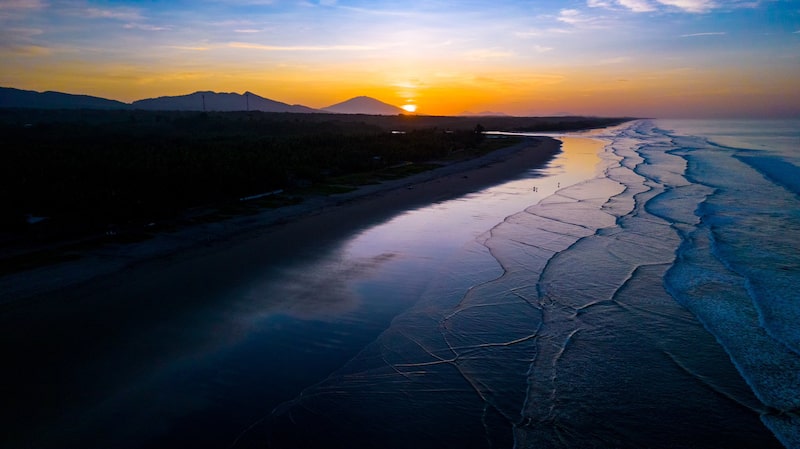Bloomberg Línea — The vacation rental segment in Central America and the Dominican Republic is recovering steadily from the Covid-19 pandemic and, in its aftermath, is now undergoing profound transformations in terms of growth and greater professionalization of services, according to data analytics agency Transparent.
Specifically, the number of tourist accommodations excluding hotels has grown by 30% from September 2020 to August 2022, according to the analytics firm, rising from 95,000 properties to more than 123,000 establishments.
Vacation rentals include houses, apartments, villas, bed & breakfasts, houseboats and campsites.
Transparent identifies three groups in terms of market size: Dominican Republic and Costa Rica are the largest in absolute terms, with more than 40,000 properties each; Panama and Guatemala are in the intermediate band of 8,000 to 10,000 properties; while Belize, Honduras, Nicaragua and El Salvador have between 3,000 to 6,000 each.
“El Salvador is the smallest market and has had the strongest growth, 78%; the Dominican Republic is a special case because it is the largest in absolute terms, and by grew 71%,” said Emilio Inés Villar, Transparent’s director of destinations, in a presentation to the Central American Tourism Promotion Agency (CATA).
Costa Rica added establishments at a rate of 28% over the past two years, while Guatemala and Panama added 42% and 39%, respectively.
In the rest of the countries, Honduras remained almost stable with a 2% growth rate. Belize and Nicaragua saw the number of vacation properties contract, the former by 9.4% and the latter by 10.7%, with the latter country in the midst of a political crisis.
Occupancy and prices
The average occupancy rate also rose by 29% across the region, with most countries moving into the 30% to 40% occupancy range, up from between 20% and 30%. On average, occupancy has risen from 21% in September 2020 to 36% in August this year.
On the other hand, average daily rates increased by 7%. Villar contextualizes this as a competitive advantage considering that worldwide prices in the segment rose by 24%.
Costa Rica is the country where prices increased the most, by 23%. It is also the most expensive destination in the region, with an average of $130 per night, followed by the Dominican Republic (which has seen a price increase of 14%), Honduras (12%) and Nicaragua (11%), while prices in Panama rose by 5%.
Rates decreased 10.2% in El Salvador, which dropped from an average of over $100 to $90, while Guatemala, in contrast, is positioned as the cheapest destination, with a drop of 4% in average prices for accommodation, with a current price range of between $70-$80.
These figures are in line with the outlook for the tourism industry as a whole.
The World Tourism Organization (UNWTO) says Central American countries are close to recovering to pre-pandemic levels, and while globally international arrivals are at 60% of 2019 levels, in Central America arrivals are around 80% of 2019 rates.
Honduras, the Dominican Republic and El Salvador have already rebounded from the loss of tourists during the pandemic, with increases of 13%, 3% and 1% respectively against 2019 figures, according to the September UNWTO World Tourism Barometer.
The recovery in Latin America and the world
As for vacation rental bookings as of June, according to Transparent, in North America bookings are already fully recovered compared to pre-Covid 19.
Latin America and Europe are still negative, down 14% and 15% respectively, while Oceania and Asia are even further behind, with reductions of 29% and 38% respectively.
Even so, property inventory in the segment advanced by significant steps in Latin America, up by 62% between 2018 and 2022; only behind North America, which saw a 63% rise.
Professionalization is also coming to this line of business, a key factor given the self-regulation of this type of accommodation, which has led to deficiencies in the quality of service offered to tourists.
“The perception is that it is a bit of an amateur sector: ‘I have a second home and when I am not using it I rent it out and make extra money’, but there are more companies that in fact have dozens or hundreds of properties and are professionally dedicated to renting them out,” Villar said.
The professional management of the business advanced from 12% in 2018 to almost 20% in 2022 in Latin America, although the region is lagging behind, as in the United States it is already close to 50%, and in Asia the proportion has risen from 25% to more than 40%.
“It is interesting to begin to understand who are the most important companies managing in each destination, they are part of the tourism ecosystem, and it is important that they are within the structure,” he said in words of advice to the region’s tourism ministries.
In Latin America, 25% of bookings are already agreed directly between the user and the accommodation’s owner, while 75% are made via online pltforms such as Airbnb, Booking or Home Away. I
n 2021, the direct route between customer and owner was only 16%.
Regarding expenditure on lodging, 24.7% of the total goes on vacation rentals, up from 20.8% pre-pandemic, while expenditure on hotels continues to account for 75%.
The segment’s evolution
“There are now new visitor profiles, such as the so-called digital nomads or remote workers,” Villar said.
In the pandemic they played a key role as an option for tourists looking to avoid crowds or remote workers. The profile is shifting toward those seeking better interaction with the local culture and not feeling like a tourist, he added.
“Now they are looking for longer stays, or they think: ‘if I’m going to be two months in a destination working from there remotely I want to feel like a local, I want to feel at home, I need a kitchen, or I’m going to have the family with me and I need more rooms, more privacy’. That is where vacation rentals have been the reason for its current success”, Villar said.




